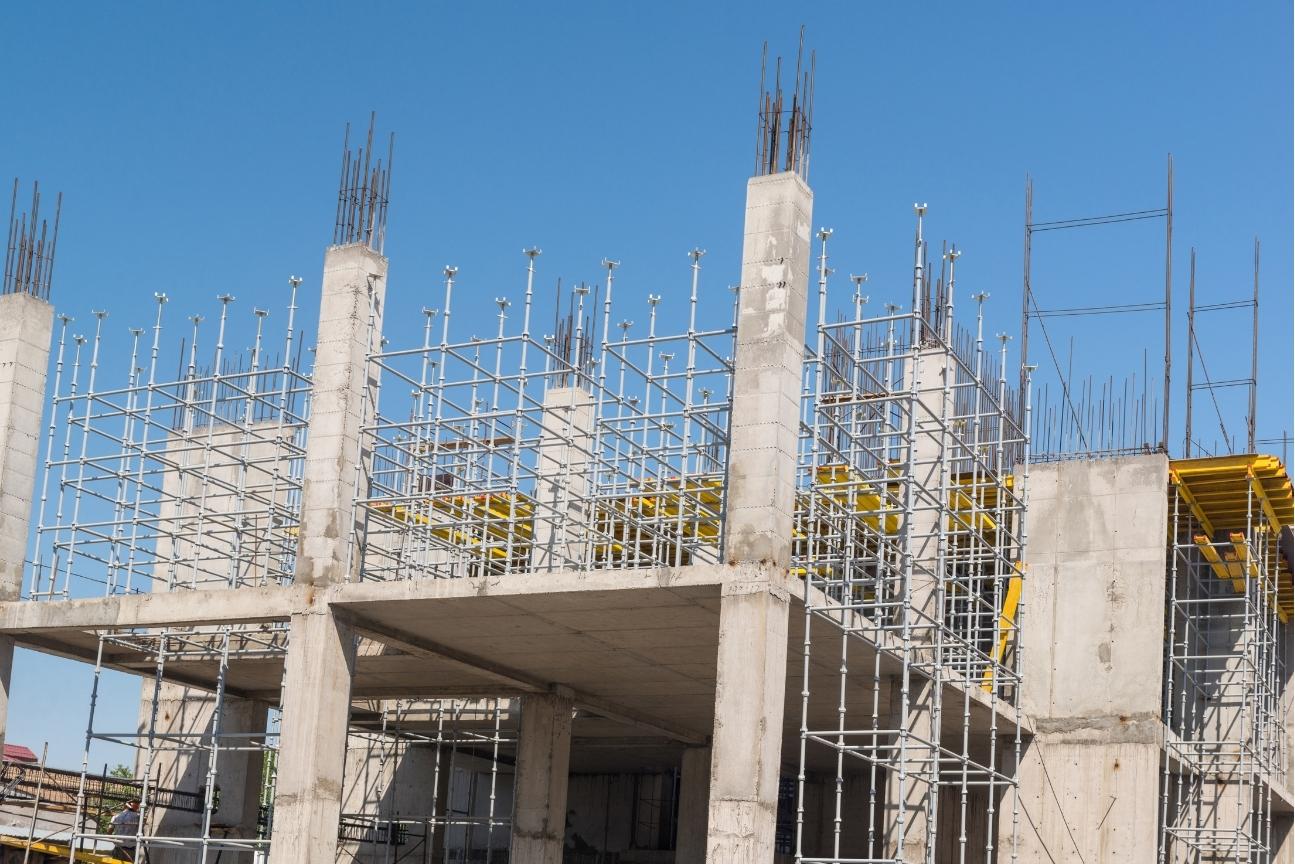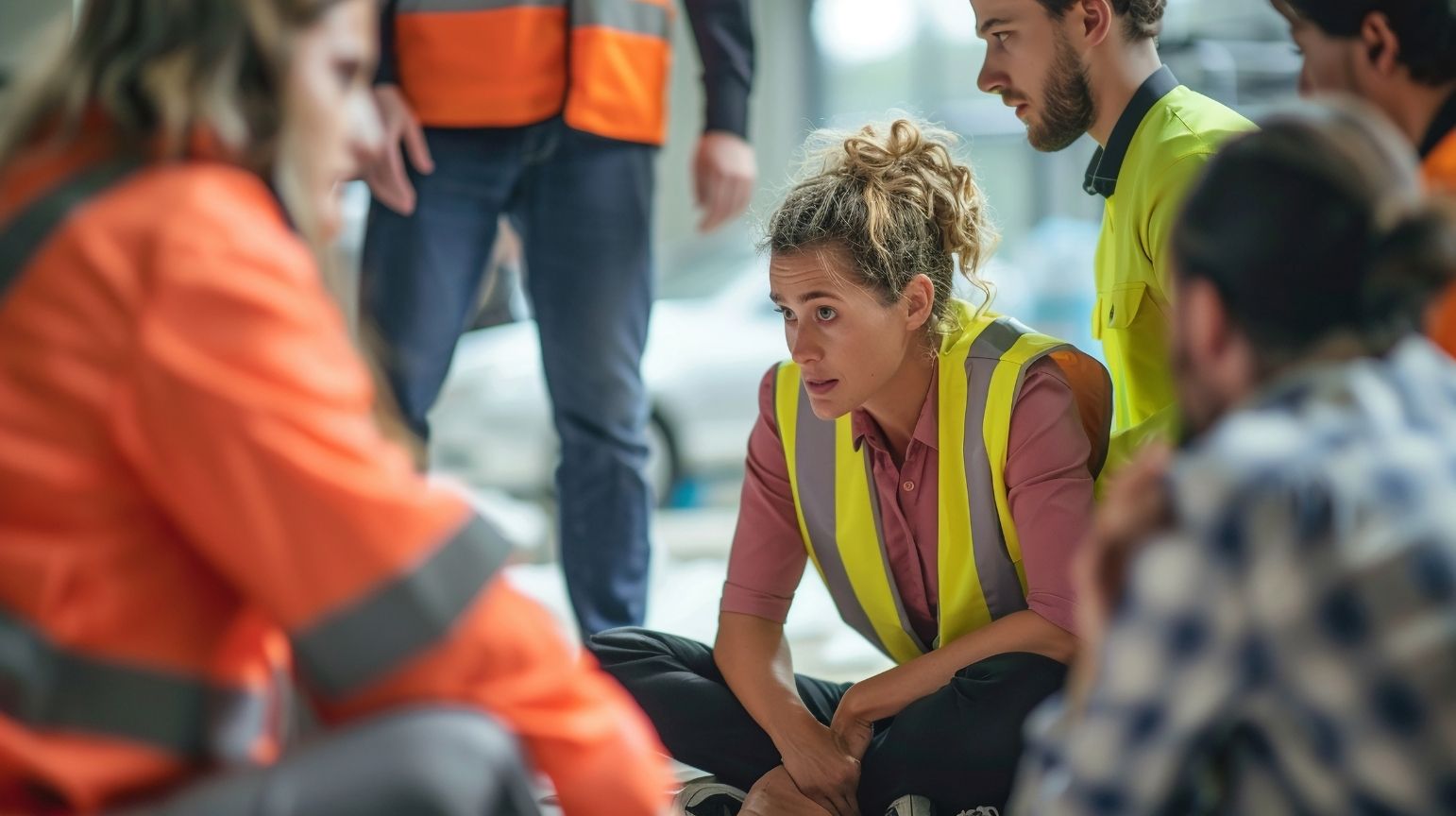Concrete structure construction is a fundamental aspect of civil engineering, forming the backbone of countless infrastructures worldwide. However, even slight oversights can lead to severe issues, resulting in costly repairs, safety hazards, and project delays. This guide explores the five most critical mistakes to avoid in concrete structure construction, helping you ensure a robust and enduring infrastructure.
Introduction
Concrete is the foundation of modern construction. From bridges to skyscrapers, its strength and durability make it indispensable in civil engineering. However, constructing concrete structures is often complex. A single misstep can lead to significant consequences, including:
- Structural failures,
- Safety hazards, and
- Escalating costs.
For civil engineers and construction managers, understanding the common pitfalls in concrete structure construction is crucial. Your success depends on avoiding these mistakes. Errors can delay your project timeline and undermine the safety and integrity of the infrastructure you build.
The Importance of Recognizing Mistakes
This guide reveals the five critical mistakes to avoid in concrete structure construction. By recognizing these issues early on, you can ensure robust, lasting infrastructure that meets both safety standards and project goals.
Key Takeaways
- Identify common mistakes to streamline your construction processes.
- Enhance the quality of your projects.
- Safeguard your project timeline and budget.
Read on to equip yourself with the knowledge needed for successful concrete structure construction.
1. Inadequate Planning and Design
Effective construction starts long before the first concrete pour. Thorough planning and design are crucial to the success of any concrete structure project. Neglecting this phase can lead to various issues, including structural failure and costly repairs. Let’s explore some key components that contribute to successful planning and design.
Importance of Site Assessments and Soil Tests
Before you break ground, conduct comprehensive site assessments and soil tests. These evaluations help ensure that the selected site can support the planned structure. Failing to consider soil type and stability can result in unwanted shifts or settling over time. For instance, clay soils can expand and contract, impacting stability. Always gather data on soil composition, moisture levels, and historical usage to inform your plans.
Overlooking Environmental Factors
Environmental factors play a pivotal role in concrete construction. Whether it’s weather conditions or nearby bodies of water, these elements can significantly impact your project. Ignoring them can lead to issues like inadequate drainage or water exposure, which may undermine the structure’s integrity. Evaluate potential environmental influences during the planning phase to adjust designs accordingly.
Common Design Pitfalls
Designing a concrete structure involves understanding various load requirements. Ignoring these specifications can lead to severe issues down the road. For example, failing to account for the weight of equipment and occupants can compromise the structure’s safety. Additionally, neglecting proper drainage design can result in pooling water, which may cause erosion or structural damage. Always ensure your designs meet local building codes and take all anticipated loads into account.
Tips for Effective Pre-construction Planning
To avoid the pitfalls mentioned, you need a solid pre-construction plan. Here are some actionable tips:
- Consult Experts: Engage with engineers and architects early in the planning process. Their insights can help identify potential issues sooner rather than later.
- Create a Comprehensive Timeline: Define each phase of the project, and allocate sufficient time for assessments and adjustments.
- Develop Contingency Plans: Prepare for unexpected obstacles with alternative plans. This foresight can save time and resources in the long run.
By focusing on thorough planning and design, you can lay a strong foundation for your concrete projects. Remember, taking these initial steps can greatly enhance both the safety and lifespan of your structure.
2. Poor Quality of Materials
Choosing high-quality materials is crucial for any concrete project. When you use low-grade materials, you set yourself up for failure. Inadequate mixes can lead to significant problems, including cracks and structural failures. This increases overall maintenance costs and jeopardizes the entire project.
Risks of Low-Quality Concrete
Low-grade concrete may seem like a cost-saving option, but it can be a false economy. Using inferior ingredients compromises the mix’s strength. For instance, inadequate cement content or substandard aggregates can weaken the final product. This reduction in overall quality can lead to long-term structural issues.
Improperly mixed materials can also cause uneven curing and setting time. This inconsistency creates weak spots within the structure. Over time, these weak spots can crack or buckle under stress, ultimately leading to catastrophic failures.
Long-Term Consequences
The ramifications of poor material choices are severe. Not only will you face initial repairs, but you could also encounter ongoing maintenance challenges and increased costs. Structures built from low-quality materials may deteriorate faster, requiring more frequent assessments and upkeep.
Moreover, such failures can pose safety risks. If a concrete structure collapses due to poor material quality, it endangers lives and damages property. When that happens, the financial and reputational costs can skyrocket.
Ensuring Quality Control in Material Selection
To avoid these pitfalls, implement strict quality control measures during material selection. Start with reliable suppliers known for their high standards. Inspect all materials upon arrival and ensure they meet industry specifications. Conduct tests, such as slump and compressive strength tests, to confirm the quality of your concrete mix.
Additionally, require detailed documentation for every batch of concrete used in your project. This ensures that all materials are traceable and meet the regulatory requirements.
By committing to high-quality materials, you’re not just improving your project; you’re investing in safety and longevity. Remember, the strength of your concrete structure hinges on the materials you choose. So, make quality your top priority.
3. Neglecting Proper Curing Techniques
Curing is crucial for the strength and longevity of concrete structures. Without proper curing, concrete lacks the durability it needs to withstand harsh conditions. This often leads to cracks, reduced lifespan, and costly repairs in the future.
Common Curing Mistakes
Many construction teams underestimate or outright skip curing processes. Two primary mistakes stand out:
Inadequate Curing Time: Concrete requires specific time to cure properly. Shortening this time can seriously compromise its strength.
Skipping Curing Processes: Some teams take a “set it and forget it” approach, neglecting essential curing methods. This oversight can lead to premature drying, causing surface cracks and weak spots.
Implications of Poor Curing
Neglecting proper curing has significant consequences. First, it directly affects the strength of the concrete. If the curing process is cut short, the concrete may not reach its intended strength. Second, improper curing can result in long-term maintenance issues. For instance:
- Cracking: As the concrete dries, it can shrink too quickly, leading to surface-level cracks.
- Structural Failures: Over time, these cracks can expand, compromising the overall integrity of the structure.
Best Practices for Effective Curing
To ensure proper curing, consider these best practices:
Maintain Moisture: Keep the surface of the concrete moist for at least the first week. Use curing compounds or wet burlap to retain moisture.
Use Temperature Control: During extreme temperatures, adjust your curing methods. In hot weather, cooling measures like shade or misters can help, while cold weather may require insulating blankets.
Train Your Team: Educate all team members about the importance of curing. This ensures everyone understands their role in maintaining proper curing conditions.
By paying careful attention to curing techniques, you can enhance the strength and durability of your concrete structures. Avoiding these common mistakes will pay dividends in the form of longevity and reduced maintenance costs. Prioritize curing as a foundational step in your construction processes.
4. Compromised Structural Integrity
When constructing concrete structures, reinforcing them appropriately is crucial. Proper reinforcement enhances strength and resilience, ensuring longevity. Unfortunately, many construction teams make mistakes that compromise structural integrity.
Common Reinforcement Mistakes
One common error is improper placement of rebar. Rebar needs to be positioned correctly to absorb tension and distribute loads evenly. If it’s too close to the surface, for instance, it may corrode more quickly. On the other hand, if it’s buried too deep, the concrete may crack under stress.
Another mistake is using inadequate amounts of reinforcement. Some teams might cut corners to save time or money. However, using insufficient reinforcement can lead to serious repercussions. Over time, this decision can result in structural failure, putting lives at risk.
Long-Term Consequences
Compromises in structural integrity lead to an increased risk of failure. Structures that aren’t adequately reinforced may show signs of distress much earlier than expected. Cracks and leaks can occur, potentially causing hazardous conditions for the public.
Safety should always come first. A compromised structure doesn’t just affect the building itself; it can endanger everyone in the vicinity. Ensuring the safety of the public should always be a priority, and proper reinforcement is a key part of that.
Guidelines for Effective Reinforcement
To avoid these pitfalls, follow these guidelines:
- Understand load requirements: Knowing the specific loads your structure will bear is essential.
- Follow best practices for rebar placement: Use clear diagrams and specifications to guide you.
- Consult professionals: Don’t hesitate to seek expertise from structural engineers. Their insights can prove invaluable.
- Regular inspections: Incorporate routine checks throughout the construction process to ensure that reinforcement meets standards.
By following these guidelines, you can maintain the structural integrity of your construction. Strong, well-reinforced structures ensure safety and durability, setting the foundation for resilient infrastructure.
5. Ignoring Environmental Factors
In concrete construction, understanding environmental factors is crucial. Neglecting these can lead to serious issues, such as structural failure and costly repairs. Let’s explore the common errors made and how to mitigate them effectively.
The Importance of Weather Considerations
Weather conditions significantly impact concrete quality and durability. For example, pouring concrete during a rainstorm can lead to improper curing. Additionally, extreme temperatures can affect the setting time of the concrete. Avoid pouring when temperatures are too high or low. Ideally, wait for moderate weather to ensure the best results.
Ground Movement and Seismic Activity
Another environmental factor to consider is ground movement or seismic activity. If the construction site is in a region prone to earthquakes, neglecting this can compromise structural integrity. Buildings need to withstand such forces. So, proper engineering practices and materials should be employed to enhance resilience.
Consequences of Ignoring the Environment
Ignoring these environmental factors can have dire consequences. Structures may deteriorate faster than expected, resulting in increased maintenance costs and potential safety hazards. For instance, inadequate drainage can lead to water accumulation, causing soil erosion and destabilization of the foundation.
Strategies for Mitigation
To counter these challenges, adopt strategies that consider environmental factors. Start with conducting thorough site assessments. This helps in identifying potential weather-related issues. Additionally, utilize suitable weather-proofing techniques during construction. For instance, use concrete additives that improve performance in extreme temperatures.
Incorporating these practices ensures a stronger, more durable structure. Awareness of the environment is key, and proactive measures can significantly extend the lifespan of concrete constructions. Remember, adapting your construction plans to account for environmental conditions is critical for success. Stay informed and prepared to make the best decisions for your projects.
Conclusion
In conclusion, avoiding critical mistakes in concrete structure construction is essential for the success of any project. Neglecting proper planning, using poor materials, ignoring curing techniques, compromising structural integrity, and overlooking environmental factors can lead to significant issues down the line. Each error not only risks project delays but also threatens safety and increases costs.
To recap, here are the five critical mistakes to avoid:
- Inadequate Planning and Design: Always conduct thorough assessments and account for site-specific requirements.
- Poor Quality of Materials: Prioritize high-quality concrete mixes and closely monitor the materials used.
- Neglecting Proper Curing Techniques: Implement and adhere to effective curing processes to ensure strength and durability.
- Compromised Structural Integrity: Reinforce structures correctly by following industry standards and guidelines.
- Ignoring Environmental Factors: Adapt your construction plans to account for local weather and ground conditions.
As the construction industry continues to evolve, staying informed about best practices is crucial. It helps teams anticipate challenges and encourages proactive adjustments in construction strategies. Moreover, fostering a culture of continuous learning not only enhances project outcomes but significantly contributes to the safety and longevity of concrete structures.
Lastly, take action now to integrate these principles into your work. Ensure your team is aware of these mistakes and equip them with the knowledge to avoid them. By doing so, you’ll pave the way for successful concrete construction projects that stand the test of time.







